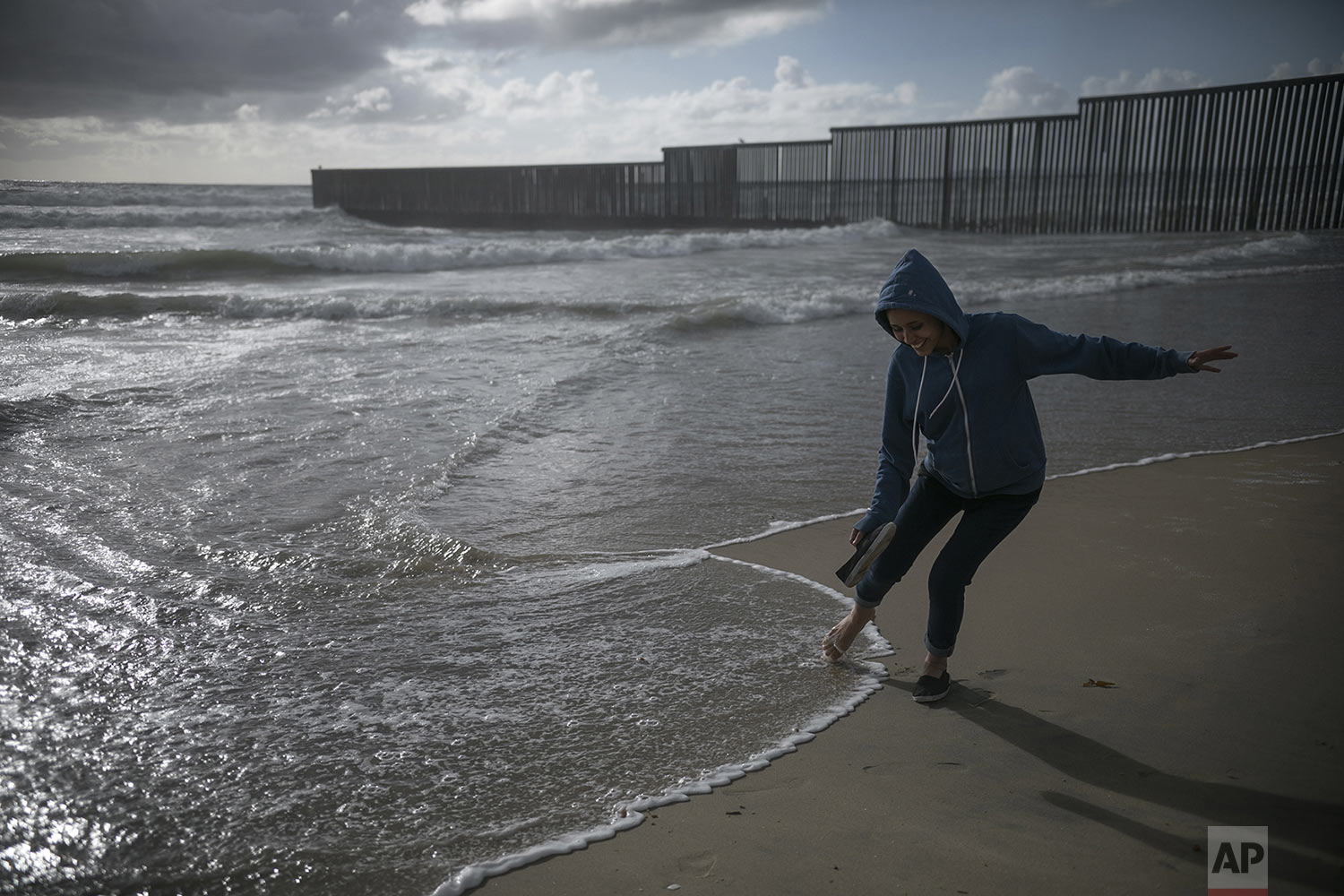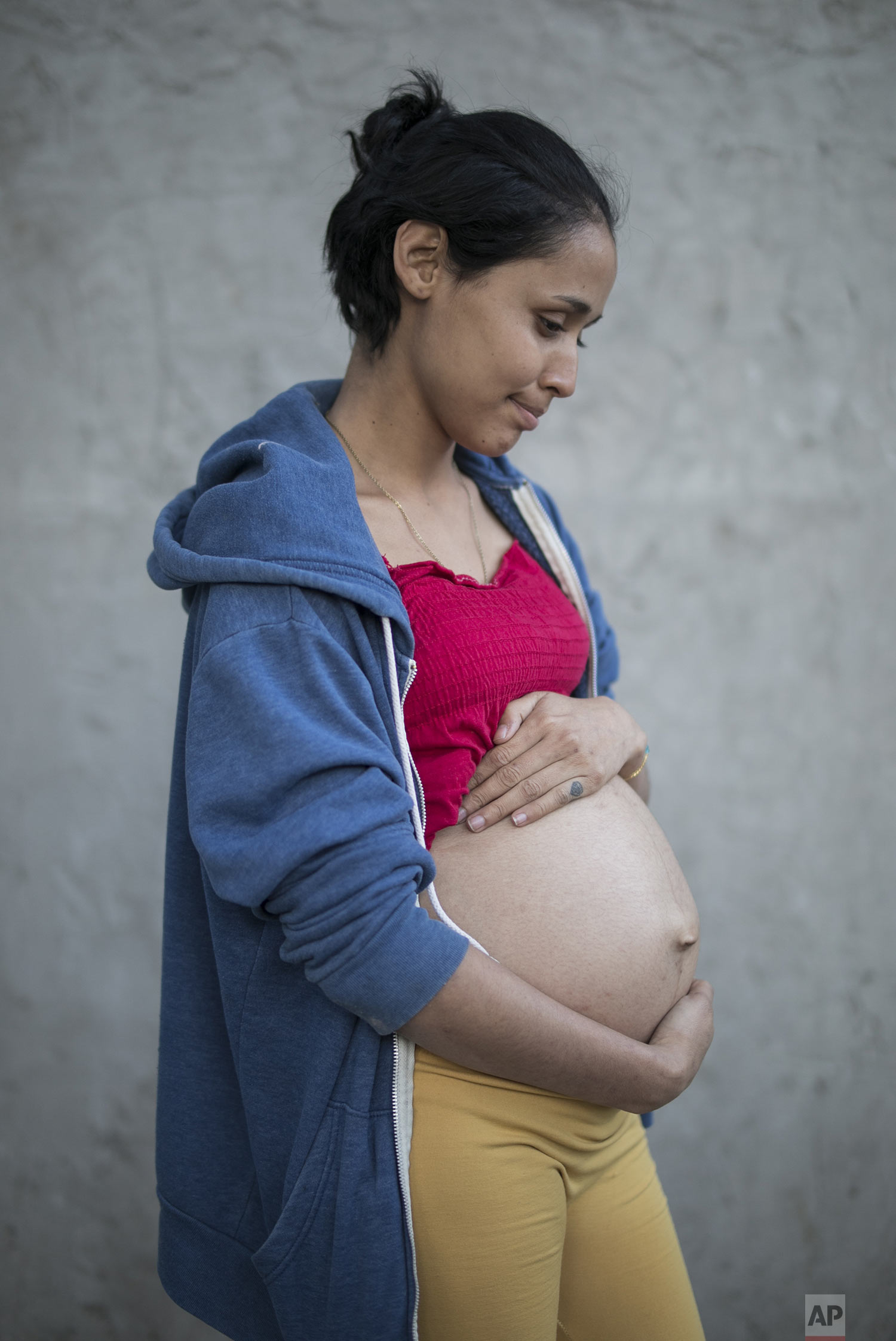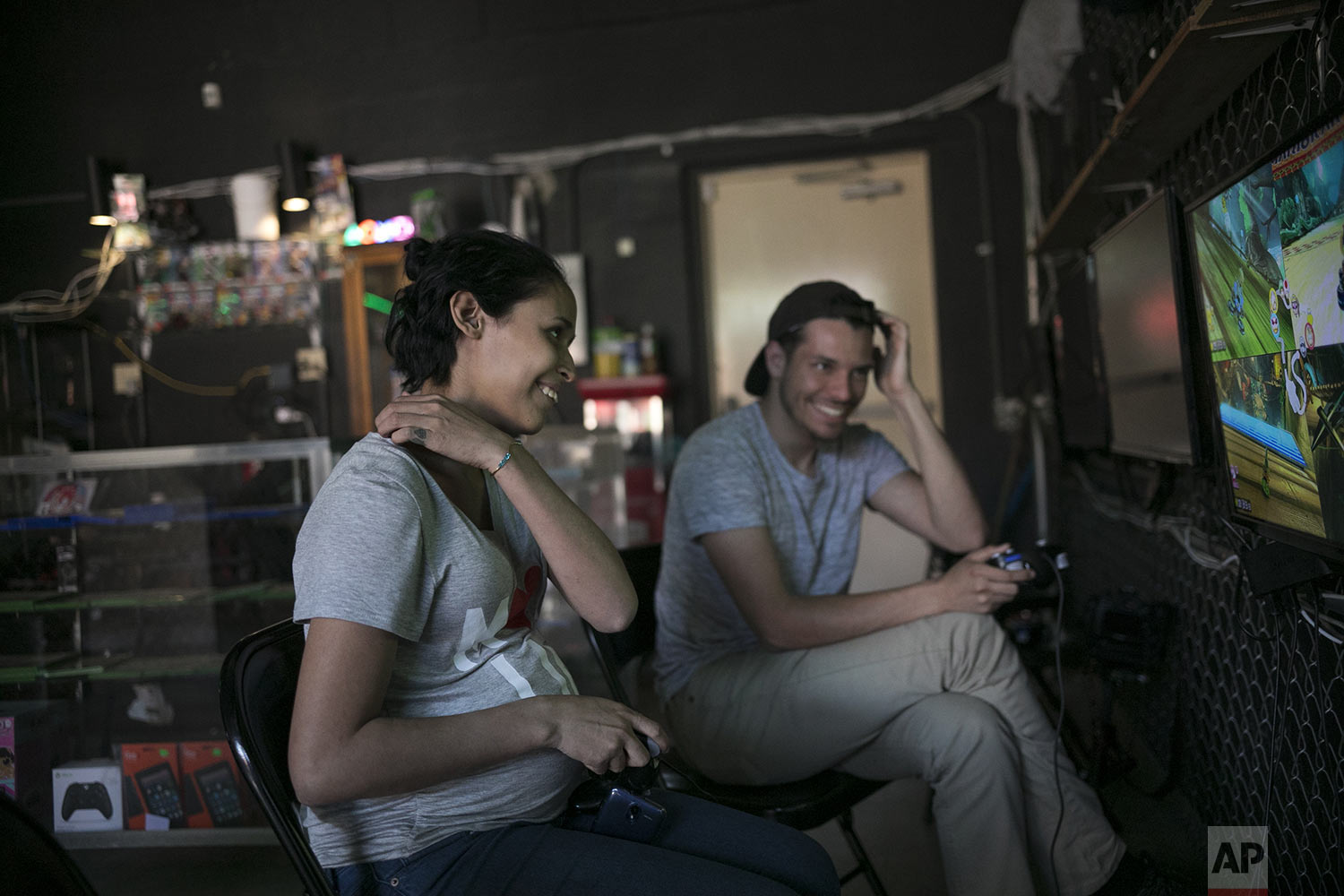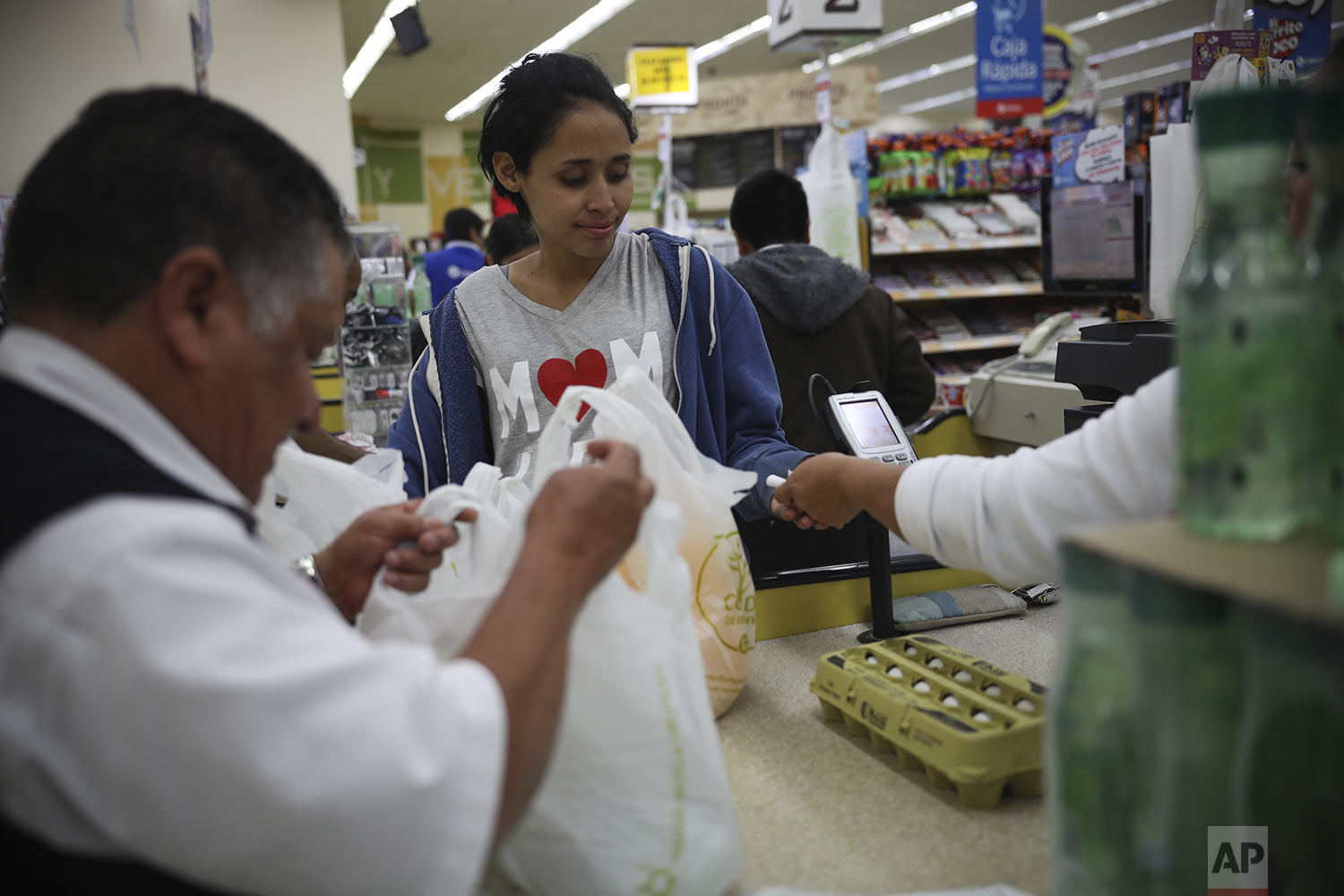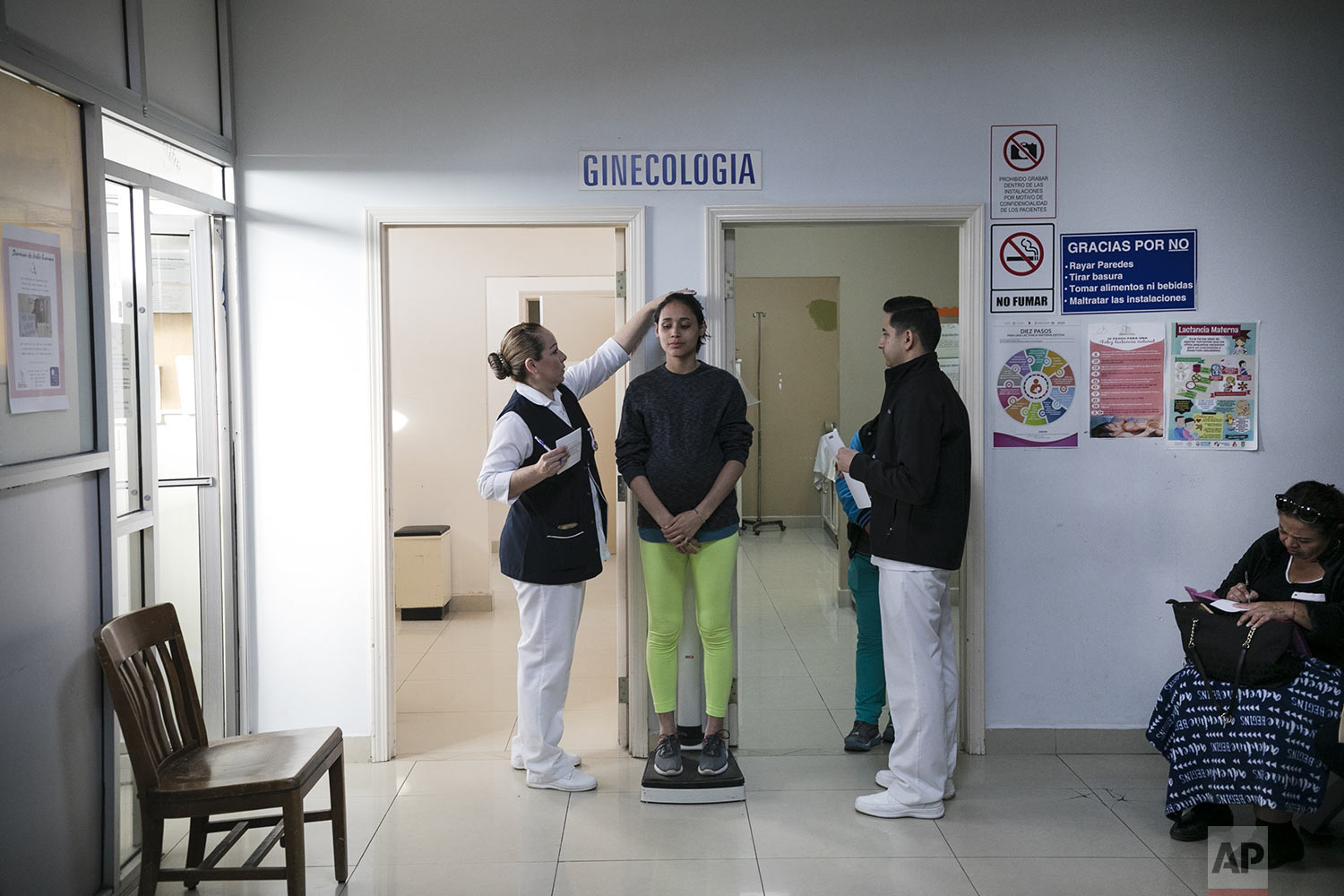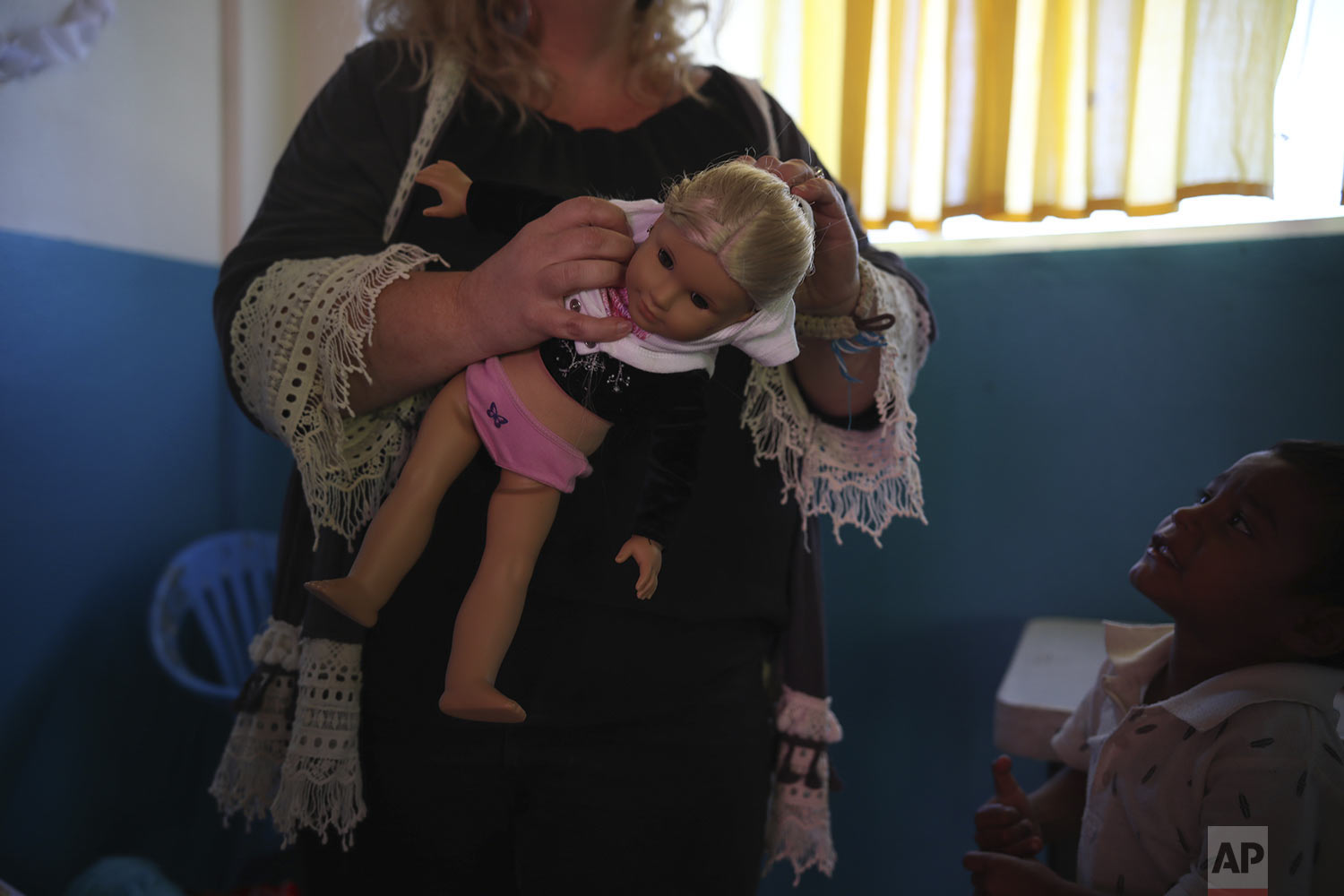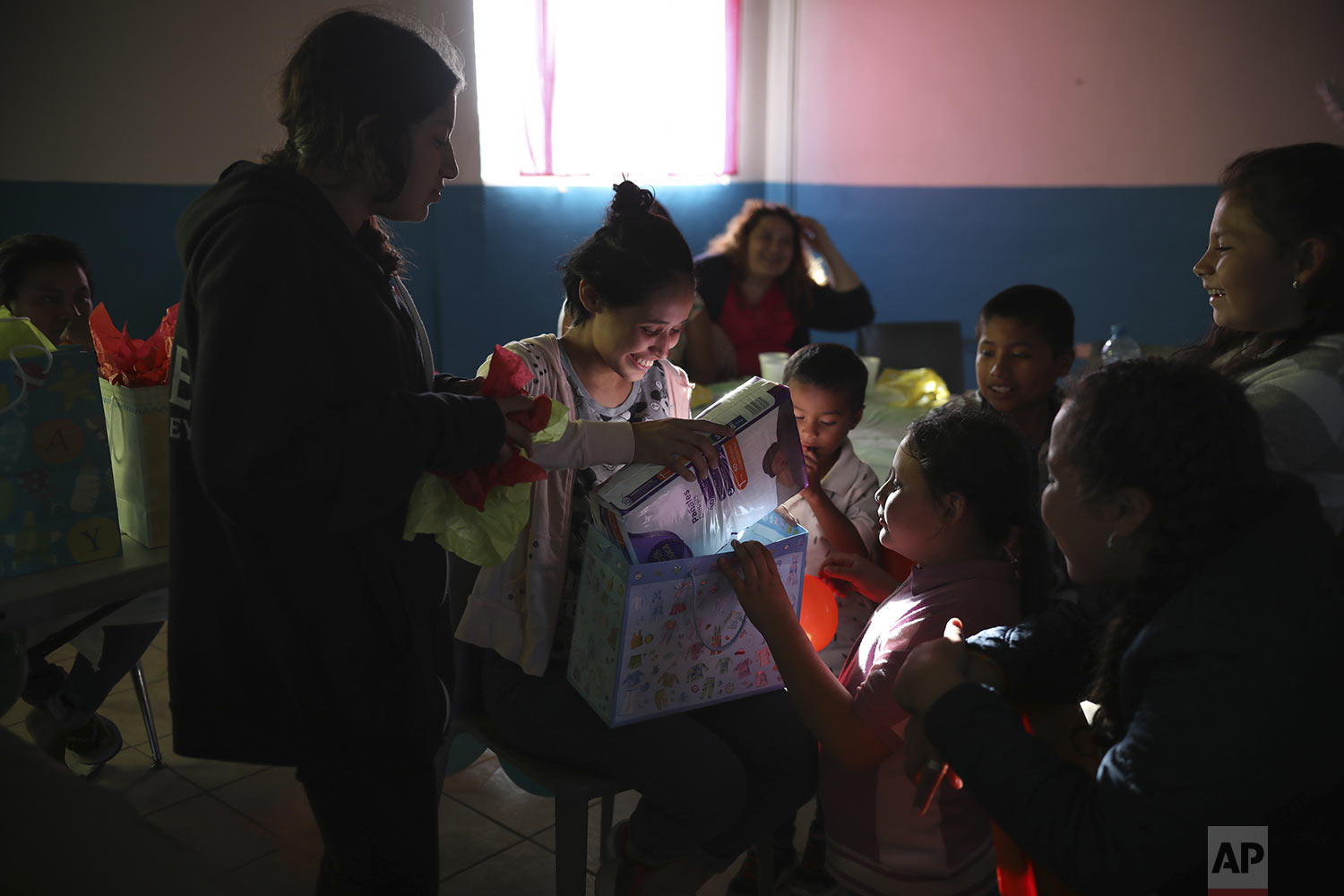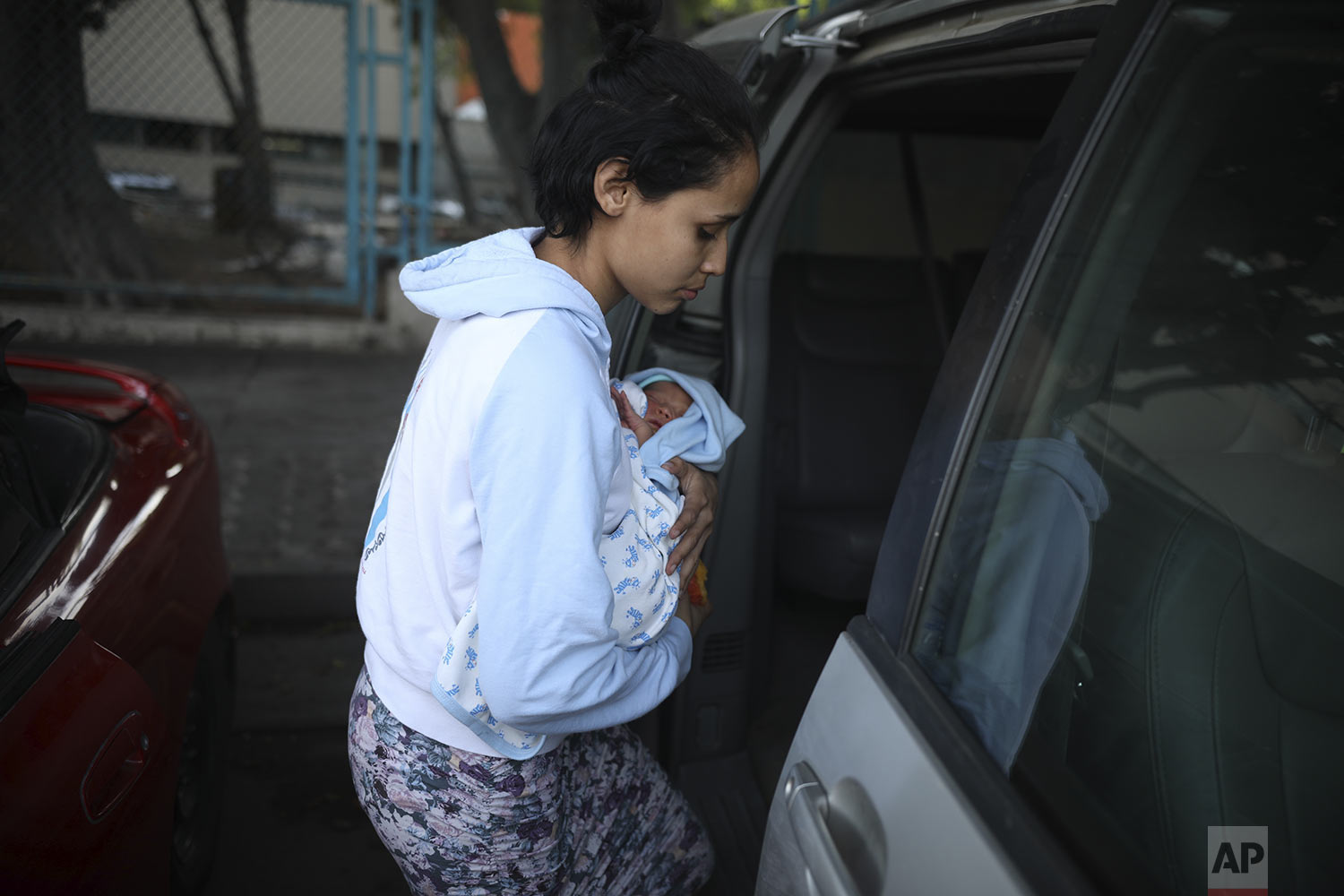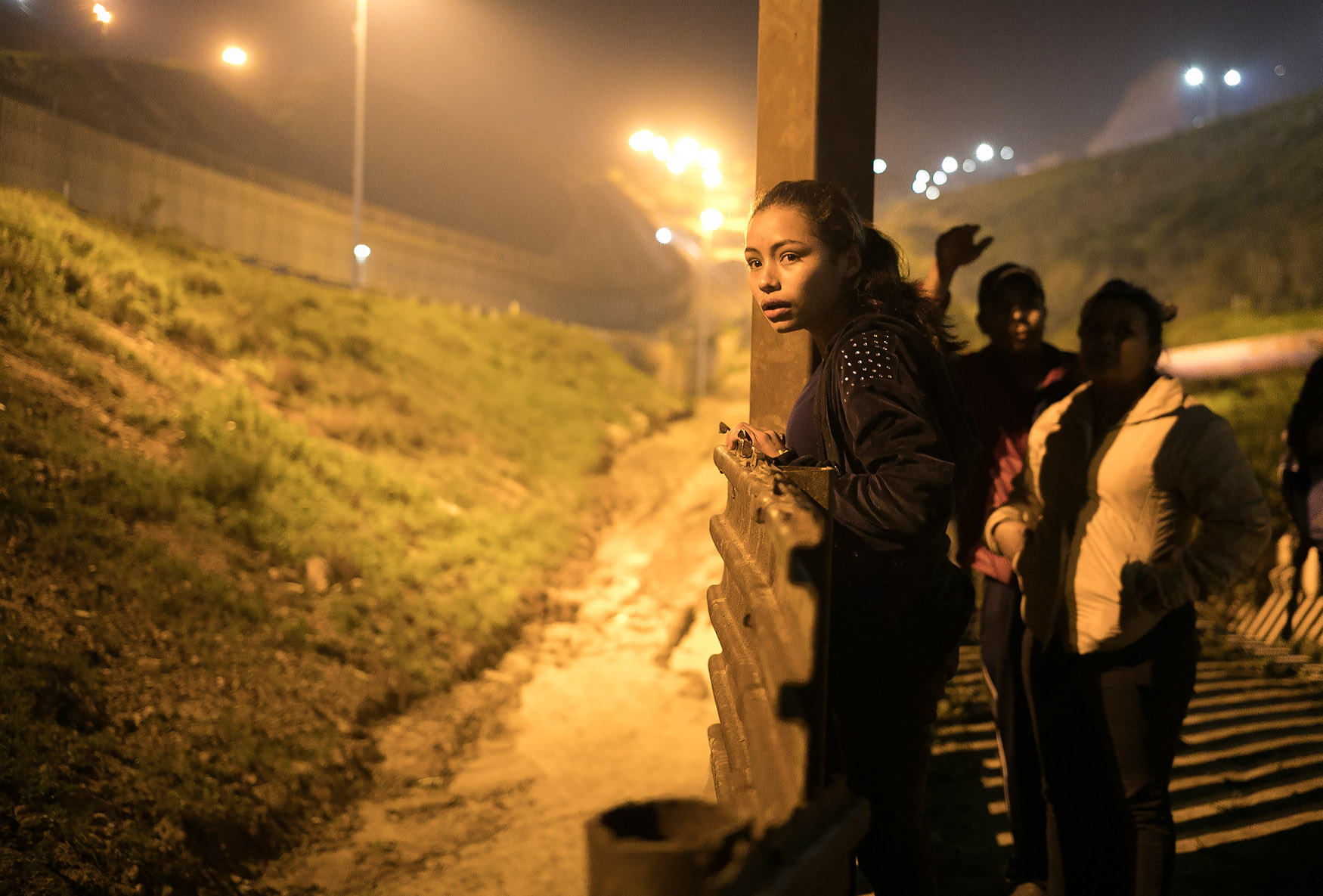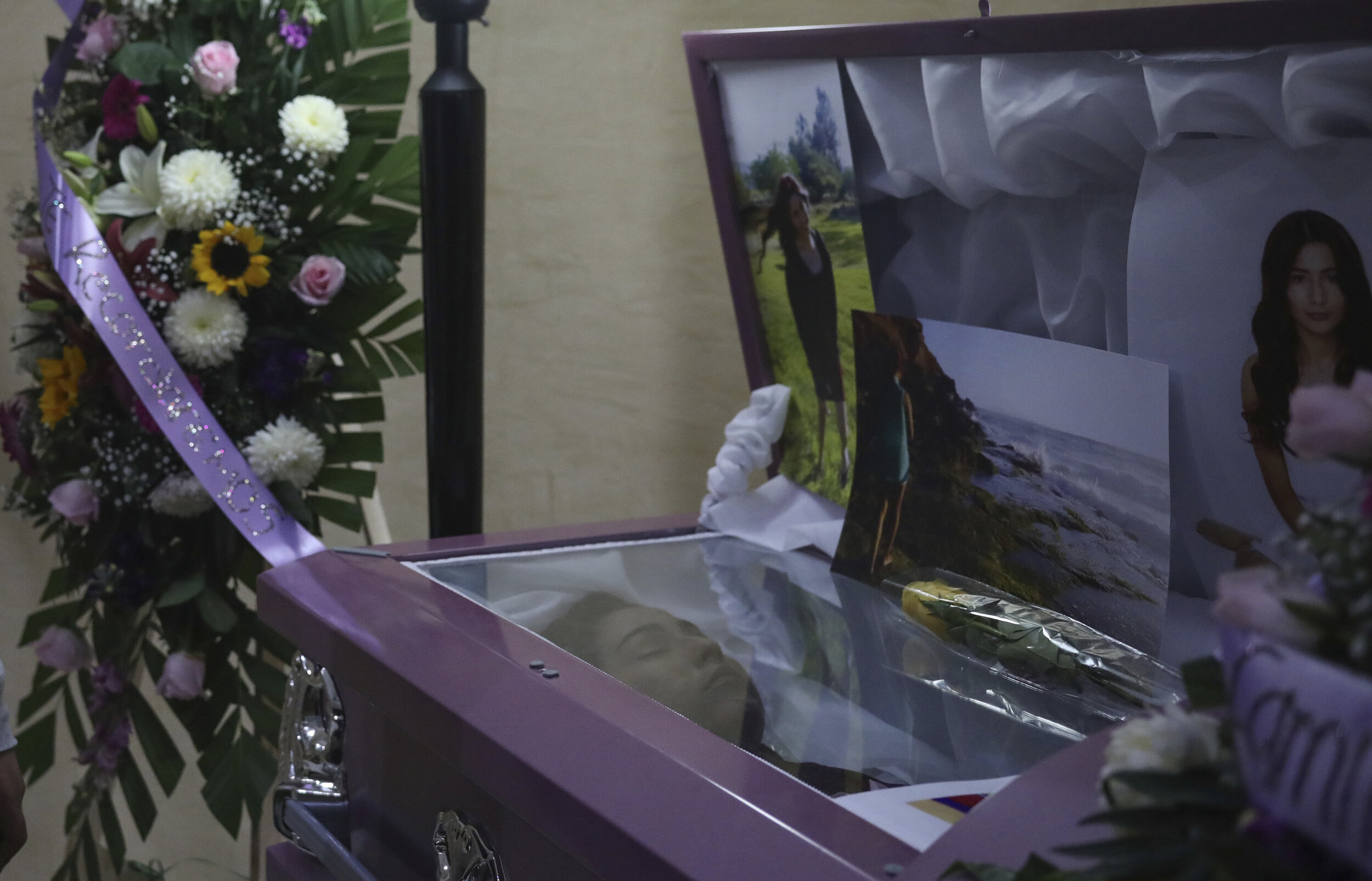Teen mom, newborn eye new life from Tijuana migrant shelter

The tiny, month-old boy slept soundly on the bottom bunk, seemingly undisturbed by the squealing Central American toddlers running by and a kitten leaping from the neighboring bed.
About 25 people sleep in the cinderblock room crammed with seven bunk beds at a Tijuana shelter overflowing with migrants, primarily from Honduras, Guatemala and El Salvador but also from as far away as Africa. Each bunk bed is like a makeshift home where families pass their days waiting — waiting for their number to be called at the US-Mexico border so they can apply for asylum in the United States, or waiting on a Mexican visa to be able to work.
More people arrive each day and now their future is even more uncertain. Under a new Trump administration policy announced last week, migrants who pass through another country — like Mexico — on their way to the US will be ineligible for asylum.
For 16-year-old Milagro de Jesús Henríquez Ayala, her cramped corner bunk covered in eight backpacks with donated diapers, toys and clothing is not the ideal spot for raising her newborn son, but it is the best place she has found since she left her violent homeland of El Salvador with her younger sister, Xiomara, after gangs threatened their family.
In this May 23, 2019 photo, pregnant teen migrant Milagro de Jesus Henriquez Ayala fills a bucket with water at the Agape World Mission shelter in Tijuana, Mexico. (AP Photo/Emilio Espejel)
In this May 20, 2019 photo, teen migrant Milagro de Jesus Henriquez Ayala dips her foot in the Pacific Ocean, just a few meters from the border wall that separates Mexico from the United States, at Playas de Tijuana, Mexico. (AP Photo/Emilio Espejel)
In this June 05, 2019 photo, teen sisters Milagro de Jesus Henriquez Ayala and Xiomara Enriquez play in the exercise area of Playas de Tijuana, Mexico. (AP Photo/Emilio Espejel)
The sisters, who were 15 and 13 at the time, were part of an untold number of Central American minors who traveled without their parents, accompanied only by other migrants, in a caravan that crossed Mexico and landed in this crime-ridden city in November. Henríquez Ayala became pregnant by her then-boyfriend during the trip, before arriving in Tijuana.
Even after that journey was over, life in the border city across from San Diego has been trying and held moments of fear.
At four months pregnant, Henríquez Ayala was living off cookies and juice. She started suffering abdominal pains and felt anxious, fearing Mexican officials would deport them.
One day she discovered a bullet-riddled body outside the low-budget hotel where she and her sister cleaned rooms in exchange for lodging and the little bit of food.
She almost miscarried. After she was taken to the emergency room, the girls moved to the shelter.
When she was seven months pregnant, a Mexican smuggler infiltrated the shelter pretending to be another migrant and tried to pressure Henríquez Ayala and her sister to cross the border illegally. She refused because she was worried it would put her at risk again of miscarrying.
The smuggler took another teen girl from the shelter instead. Henríquez Ayala has not heard from that girl since, and fears she may have been kidnapped.
Henríquez Ayala said she is no longer seeking the American Dream — at least not for now.
She has finished the paperwork for a Mexican visa and is determined to build a life on the south side of the US-Mexico border, though the lanky girl has no idea how she’ll do that. She left middle school and has almost no job skills, and now she must find work that allows her to be with her baby, Alexander.
The girls’ father, Manuel Henríquez, had left them after they crossed from Guatemala into Mexico to go on his own to the United States because he thought it was too dangerous with his teenage children in tow. But he was quickly detained and deported.
Now he is with his daughters in Tijuana after Mexico granted him a one-year humanitarian visa. He earns about 200 pesos, or roughly $10, a day selling woven bracelets. He lives at the shelter, too, and hopes to bring his remaining three adult children and three grandchildren in El Salvador to Mexico.
Back home in San Salvador, the Central American nation’s capital, gang members had beaten him for refusing to make extortion payments on his bracelet-selling business. They also threatened the girls for walking into what they consider the gang’s territory on their way to school.
“You can make money here but slowly,” said Manuel Henríquez, 58.
On a recent day, he wove bracelets for a group of US teens from Knoxville, Tennessee, who were doing volunteer work at the shelter as part of their church service.
In this June 15, 2019 photo, Manuel Henriquez holds his grandson Alexander, as he sits next to his daughter Milagro de Jesus Henriquez Ayala, on her bed, at the Agape World Mission shelter in Tijuana, Mexico. (AP Photo/ Emilio Espejel)
In this June 12, 2019 photo, newborn Alexander Adonay Henriquez Ayala is given his first bath at the Agape World Mission shelter, in Tijuana Mexico. (AP Photo/Emilio Espejel)
Henríquez Ayala bathed Alexander in a small plastic tub on the cement floor next to her bunk bed. Like all her baby’s belongings, it was donated by someone across the border. Alexander wiggled and cried as she gently washed his black hair.
“I’m baptizing him,” she joked to the Rev. Albert Rivera, who runs the Agape Mision Mundial (Agape World Mission) church.
Rivera organized a protest and got human rights officials involved when the Tijuana hospital initially denied her father access to her after she gave birth.
Tijuana, which has one of the highest homicide rates in Mexico, is not the dream she initially sought when she fled home. But she said it is better than the life she left behind.
“I almost don’t like to come out of this room,” she said, smiling, standing in a narrow passage between the bunks. “I feel safe here. But I know I will have to leave someday and find a home.”
In this June 12, 2019 photo, Salvadoran teen migrant Milagro de Jesus Henriquez Ayala nuzzles with her newborn son Alexander, at the Agape World Mission shelter, in Tijuana, Mexico. (AP Photo/Emilio Espejel)


